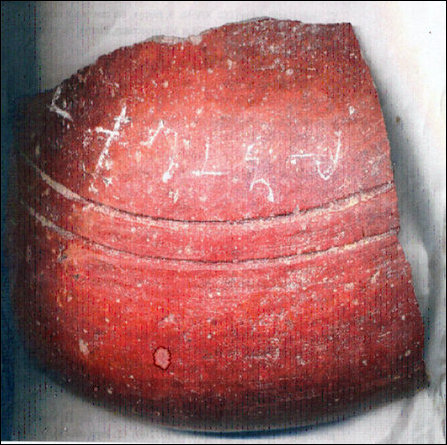Know the Etymology: 148
Place Name of the Day: Thursday, 15 July 2010
Naakappaduvan-kulam
நாகப்படுவன்குளம்
NākappaṭuvaṉkuḷamNaaka+paduvan+kulam
The pond named after Naakan of the Paduvar community
| Naaka |
Adjective of Naakan, a personal name that was mostly found in the lower echelons of the society in recent centuries. It was also an ethnic identity in the distant past. See column on Naaka-naadu for etymology and further discussions. |
| Paduvan |
Masculine form of word for a member of the Paduvar community; Paduvi: Feminine form of word for a member of the Paduvar community (Tamil, Dravidian Etymological Dictionary 3858); Paduvar: A community that was engaged in selling toddy (Pingkalam lexicon DED 3858); The presence of this community at Marichchukkaddi in Mannaar district is recorded by colonial writers; Padu: Toddy (Tamil, DED 3858). Probably toddy got the name because of its connection to pot or container; Padu: Tank, pond, deep pool; Padukar: Pit, hole (Tamil, DED 3856); Padiya. Pade: Small pit containing water (Telugu, DED 3856). |
| Kulam |
Pond, Tank, lake, reservoir (Tamil, Dravidian Etymological Dictionary 1828). See Thampanaik-kulam and Oddan-kadduk-kulam. |
Paduvar is an ancient Tamil community of toddy sellers, the identity of whom is lost today among Eezham Tamils.
However, colonial writers of 19th century have recorded the presence of this community at Marichchukkaddi in the Mannaar District. They also have recorded that this community members had the habit of blowing pots to produce trumpeting sound during ceremonies and occasions.
The present writer has heard from elders that even until the first half of 20th century, there was a community called Kudam-oothi (those who blow pots) among the lower echelons of the Jaffna society who used to attend funerals blowing pots.
The community name Paduvar comes from the old Tamil word
Padu, meaning toddy.
In contemporary usage Paduvaa and Vaduvaa are derogatory words used in scolding.
The importance of pot in the culture of toddy sellers, and Naakan being one of the personal names put on by people engaged in the profession of selling toddy in ancient times are testified by an interesting archaeological find reported from Tamil Nadu recently.
A piece of a large pot, bearing a Tamil Brahmi inscription dateable to c.3rd century CE has been found at Aandippaddi in Vealoor District of Tamil Nadu.
The legend in the pot has been read as
Naakan-ooral, which means Naakans toddy-sap.
The toddy-seller thought of claiming the ownership of his pot to avoid confusion with the pots of fellow toddy sellers.
Here is a case of a toddy-tapper living in the countryside who is literate enough to write down his name and the purpose for which the pot is used says Iravatham Mahadevan who read the inscription (The Hindu, 24th June 2010).
Such pottery inscriptions of ownership, coming from ordinary people, indicate widespread literacy in the ancient Tamil country, Mahadevan points out, adding that inscribed pottery is much more abundant in Tamil Nadu than anywhere else in India.
Naakap-paduvan-kulam and the adjacent marsh
Naakap-paduvan-villu are in Kariyaalai in the Poonakari Division of Kilinochchi District.
Some related place names: Paduvara-halli: (Kannada) The hamlet of Paduvar. This is today a part of Mysore city in Karnataka. The Tamil equivalent of the place name is Paduvarathu-palli.
Paduvar in modern Kannada means the very poor or the lowest layer of people.

Piece of an ancient pot from Aa'ndippaddi in Vealoor District of Tamil Nadu. The legend in Tamil Brahmi, dateable to c. 3rd century CE, has been read as Naakan Oo'ral, meaning 'the toddy sap of Naakan'. [Image courtesy: The Hindu, 24th June 2010]
Previous columns:







